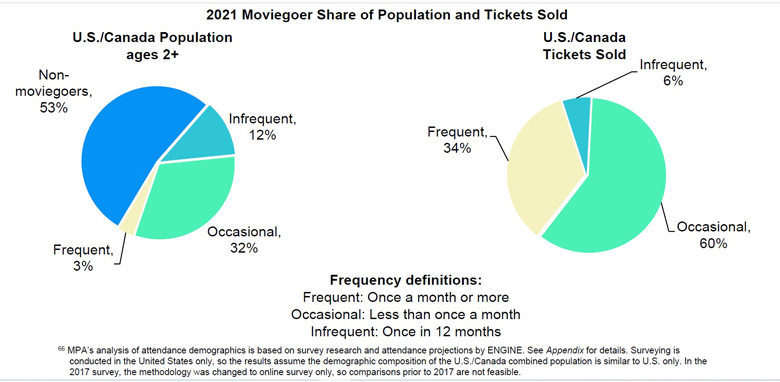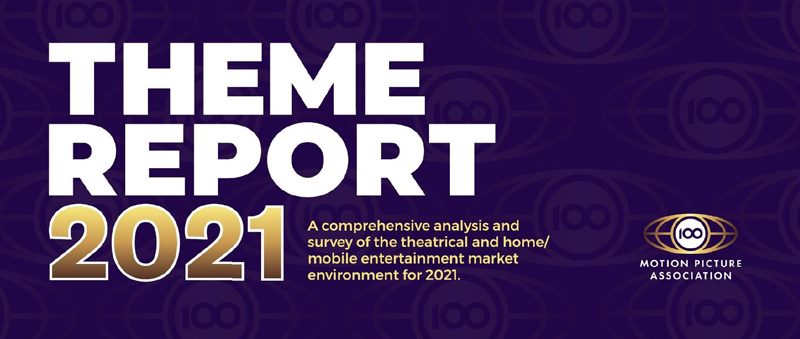
Cinema is still a “frequent moviegoer” affair. Major studio trade group the Motion Picture Association estimates that 3 percent of the U.S./Canada population accounts for an outsized 34 percent of movie ticket sales.
That 3 percent that drive cinema economics are “frequent” attendees, defined as individuals that buy at least 12 movie tickets a year, according to the MPA. Meanwhile, at the other extreme, 53 percent of the population never goes to theaters.
There are several implications.
* The movie business can withstand a big chunk of the population saying “I never go to movies” — since it’s that small 3 percent slice of frequent moviegoers keep cinema economically viable.
* Another implication is that the all-important frequent moviegoers are a youth demographic (explained further later). That points to youth-favorite comic book film adaptations — think “Spider-Man: No Way Home” and “The Batman” — as crucial to filling cinema seats.
* Another implication is adults with sophisticated tastes (think moderately budgeted hits “Uncut Gems” and Oscar winner “Parasite”) are fading as a force, though cinemas try to retain upmarket fare that comes mostly from independents. The consumer marketing costs to support theatrical release is an economic barrier to upmarket fare, plus streamers have deep pockets to bid lavishly for such films.
As for moviegoing tilting to the youth demographic, ages 12-17 are 8 percent of the overall population but account for an outsized 14 percent of tickets sold. The age 18-24 group is 9 percent of the population but accounts of 14 percent of tickets sold (a coincidence it’s the 14 same percentage for the two groups). Ages 25-39 are 21 percent of the total population but account for 29 percent of tickets sold.
The definition of demographic — analyzing a population by one characteristic — in this case age of people.

So where is the demo softness? Ages 50 and older have the reverse proportional relationship to ticket sales.
The reported year of 2021 was distorted by the pandemic, as is the prior year, of course. But some 2021 seems significant pointing to long-lasting trends.
* Some 179 movies were streaming exclusive in 2021, the same as in 2020, which is an achievement amid pandemic-related production problems. This compares with 113 in 2019 as streaming platforms ramp up original programs of all kinds.
* According to Nielsen data in the MPA report, the Disney/Pixar film “Luca” that was an exclusive on Disney+ was the most watched movie of 2021, with more than 10.5 billion minutes streamed. “Luca” runs 96 minutes, so that translates into 109 million full viewings of the Disney animated film.
* Streaming subscriptions climbed 14 percent to 1.3 billion globally; the U.S. accounted for 353.2 million subscriptions, also up 14 percent. While a 14% increase in unit sales would be great for most industries, streaming is crowded with new entrants, of which most right now lack global scale to be viable in the long term.
The data insights come from the 67-page Hollywood industry “Theme Report 2021” that covers filmed entertainment and TV programs globally.
Related content:
Leave a Reply